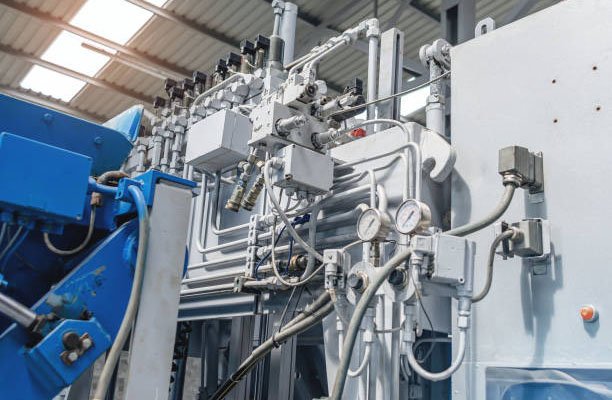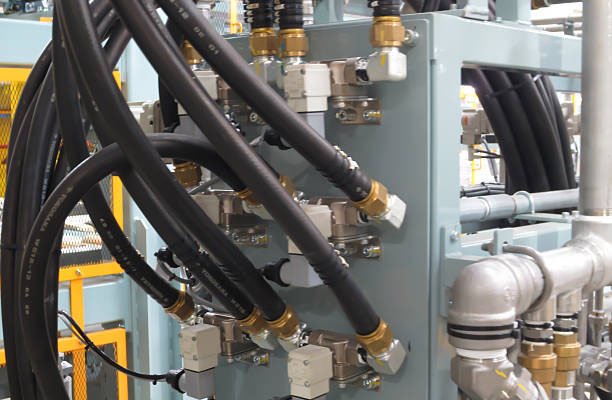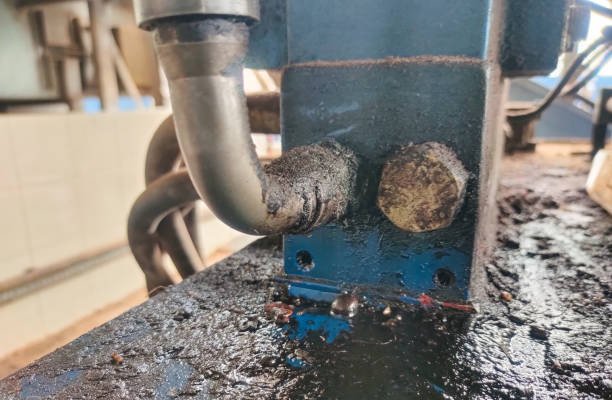1. Introduction to Leak-Free Hydraulic Systems
Hydraulic systems are the beating hearts of countless machines—from factory presses to heavy-duty excavators. However, even the most well-built systems can suffer from a frustrating and costly problem: leaks. Leak-free hydraulic systems aren’t just a maintenance dream—they’re a necessity for modern efficiency, environmental safety, and long-term operational success.
In this article, we’ll explore practical, proven methods to prevent hydraulic leaks. You’ll learn how to improve system reliability, reduce costs, and embrace sustainable operations by ensuring your hydraulic system stays sealed tight.
2. Why Leak-Free Systems Matter in Industrial Applications

Benefits of a Leak-Free Hydraulic Setup
A leak-free system provides multiple operational advantages:
- Higher Equipment Uptime – No leaks mean fewer unplanned shutdowns.
- Improved Safety – Slippery hydraulic fluid can lead to dangerous workplace accidents.
- Longer Equipment Life – Components last longer when fluid stays where it should.
Environmental and Cost Considerations
Leaks can be more than an annoyance—they’re costly and harmful. Each drop of oil spilled increases cleanup time, environmental liability, and loss of expensive hydraulic fluid. Over time, those costs add up, making leak-free systems not just smart—but essential.
3. Common Causes of Hydraulic Leaks
Worn Seals and Gaskets
Seals degrade due to age, temperature extremes, or exposure to incompatible fluids. Once compromised, they can no longer prevent fluid from escaping.
Excessive System Pressure
When pressure spikes beyond design specifications, it can force fluid past seals or rupture hoses entirely.
Improper Installation and Maintenance
Loose fittings, cross-threaded connections, or poorly tightened bolts can all be culprits. Sometimes, leaks are the direct result of human oversight during maintenance.
4. Designing for Leak Prevention
Choosing the Right Materials and Components
Using quality materials—from durable elastomers to high-pressure-rated hoses—ensures longer-lasting seals and better leak resistance.
Importance of Proper Hose Routing
Sharp bends and twisted hoses create stress points, increasing the chance of cracks and splits. Correct routing minimizes wear and maximizes system life.
5. Maintenance Best Practices
Routine Inspection Procedures
Performing regular inspections lets operators spot leaks early. Look for fluid puddles, oil sheen, or drops forming around fittings and joints.
Corrective vs Preventive Maintenance
Don’t just fix issues—prevent them. Preventive maintenance keeps systems healthy before problems arise, saving time and cost in the long run.
6. Hydraulic Fluid Selection and Management
Compatibility and Viscosity Ratings
Using the wrong fluid can lead to seal swelling or breakdown. Always choose fluids recommended by the system manufacturer.
Importance of Clean Fluids
Contaminated fluids are the silent killer of hydraulic systems. They wear down seals and create microscopic passageways for leaks.
7. Seal and Fitting Technologies That Prevent Leaks
O-Ring and Gasket Innovations
New materials like Teflon blends or polyurethane resist wear and fluid absorption, staying effective longer under tough conditions.
Thread Sealants and Hydraulic Fittings
Use anaerobic sealants or PTFE tapes rated for hydraulic pressures. Also, invest in high-quality fittings designed for your system’s pressure range.
8. Best Tools for Leak Detection
Ultrasonic Detectors and Dye Testing
Early detection of leaks is key to a leak-free system. Ultrasonic leak detectors are widely used because they can pick up the high-frequency sounds generated by fluid escaping under pressure—often well before the leak becomes visible. These tools are non-invasive, fast, and highly accurate, making them indispensable for preventive maintenance.
Dye testing involves adding fluorescent dye to the hydraulic fluid. Under UV light, even the tiniest leaks glow, allowing for pinpoint location identification. This is especially helpful in complex systems where visual inspection is difficult.
Pressure Gauges and Flow Meters
Installing pressure gauges at critical points helps detect pressure drops, which often signal leaks or blockages. Similarly, flow meters can highlight discrepancies in input and output flow rates, suggesting internal or external leakage.
Together, these tools form a layered defense system that helps operators spot and fix problems before they escalate.
9. Training and Skill Development for Operators
Preventing Human Errors Through Education
A significant number of hydraulic leaks are caused by avoidable human mistakes. Overtightening a fitting, using the wrong type of sealant, or ignoring proper assembly protocols can all lead to leaks. That’s why comprehensive training programs for machine operators and technicians are critical.
Training should focus on:
- Understanding hydraulic schematics
- Correct installation techniques
- Proper torque specifications
- Recognizing signs of wear and tear
Maintenance Staff Training Programs
Beyond operators, maintenance crews need ongoing education on the latest leak detection tools, component upgrades, and troubleshooting techniques. In-house workshops, manufacturer-led seminars, and online certification programs are all effective ways to build a more knowledgeable team.
The investment in training pays for itself by reducing leaks, downtime, and repair costs.
10. Role of Automation and Smart Monitoring
Real-Time Monitoring Systems
Smart systems today include real-time sensors that constantly check pressure, temperature, and fluid levels. These sensors can immediately alert technicians to changes that might indicate a developing leak, long before it’s visible or causes damage.
Data collected by these systems can also be used for trend analysis, allowing teams to forecast when maintenance is due—shifting from reactive to predictive maintenance.
IoT Sensors for Leak Alerts
The Internet of Things (IoT) revolution is making leak detection smarter and more accessible. IoT-enabled hydraulic systems can:
- Send automatic leak alerts to mobile devices
- Integrate with facility management software
- Provide cloud-based dashboards for remote monitoring
This tech-driven approach drastically reduces response time, helping companies maintain leak-free operations with minimal effort.
11. Retrofitting Old Systems to Be Leak-Free
Component Upgrades and Compatibility Checks
Aging hydraulic systems often become prone to leaks due to worn-out seals, outdated fittings, and incompatible materials. Retrofitting involves replacing these components with modern, leak-resistant alternatives. Start by assessing the system’s weakest links—typically hoses, seals, and connections.
Newer components often feature improved materials like:
- Viton or Teflon seals for better chemical and temperature resistance
- Braided or reinforced hoses with higher pressure ratings
- Quick-connect fittings with anti-drip technology
Before retrofitting, it’s crucial to check compatibility. Mixing new components with old materials can introduce chemical incompatibility or mismatched sizes, creating more problems than solutions.
Cost-Benefit Analysis of Retrofitting
Retrofitting may seem expensive up front, but the long-term savings in fluid loss, downtime, and maintenance can outweigh initial costs. Create a cost-benefit analysis that compares:
| Factor | Old System | Retrofitted System |
|---|---|---|
| Annual Fluid Loss (Liters) | 500 | 50 |
| Downtime per Year (Hours) | 40 | 5 |
| Maintenance Cost (USD) | $8,000 | $2,000 |
The data makes a compelling case for investing in retrofitting to ensure leak-free performance.
12. Industry Standards and Compliance
ISO and OSHA Guidelines
To ensure safety and efficiency, industries must follow strict standards for hydraulic systems. ISO 4413 outlines the safety requirements for hydraulic fluid power systems, emphasizing leak prevention through design, installation, and maintenance. Key highlights include:
- Mandatory pressure relief devices
- Guidelines for safe routing of hoses
- Standards for component selection
Meanwhile, OSHA regulations focus on workplace safety. Leaks not only waste fluid but also pose serious slip hazards. OSHA mandates that employers must fix such hazards promptly and maintain a safe working environment.
Manufacturer Recommendations
OEMs often provide specific guidelines on maintaining hydraulic systems in a leak-free state. These may include:
- Service intervals for seals and hoses
- Approved fluid types
- Recommended installation procedures
Following these guidelines ensures warranty compliance and optimal system performance.
13. Case Studies of Leak-Free Hydraulic Systems
Manufacturing Plant Transformation
A mid-sized automotive manufacturing plant in Michigan reduced hydraulic fluid leaks by 90% after implementing a leak prevention program. They:
- Replaced all outdated hoses with reinforced, crimped alternatives
- Switched to synthetic, non-toxic hydraulic fluid
- Integrated ultrasonic detectors and trained all technicians
Within 12 months, the plant saved over $50,000 in fluid costs and reduced environmental disposal incidents to zero.
Heavy Equipment Performance Overhaul
A construction company operating a fleet of excavators suffered frequent downtime due to leaky hydraulic lines. After installing real-time pressure sensors and conducting a full system retrofit, downtime dropped by 70%. The project paid for itself in under 18 months and significantly improved project timelines and equipment reliability.
14. Future Trends in Hydraulic System Design
Green Fluids and Eco-Conscious Engineering
As sustainability becomes a global priority, the hydraulic industry is shifting toward bio-based and biodegradable fluids. These eco-friendly fluids reduce environmental impact in the event of a leak and are safer for operators and ecosystems. Paired with leak-free system design, they offer a powerful combination of sustainability and safety.
Other green innovations include:
- Low-toxicity additives
- Fluids with higher thermal stability
- Recyclable and reusable materials in hose and seal design
Engineers are also designing systems that require lower pressure for operation, which naturally reduces leak risk while conserving energy.
Smart Self-Healing Hydraulic Systems
One of the most exciting developments is self-healing materials. Polymers and elastomers are being developed that can repair microscopic cracks and wear on their own, extending the lifespan of seals and hoses. While still in early stages, this innovation could revolutionize leak prevention by making hydraulic systems truly “set and forget.”
15. Conclusion
Preventing leaks in hydraulic systems isn’t just a technical challenge—it’s a mindset. From smart design and high-quality materials to trained operators and predictive maintenance, every aspect of your operation plays a role.
A leak-free system leads to:
- Reduced downtime
- Improved workplace safety
- Lower operating costs
- Enhanced environmental compliance
Organizations that commit to leak-free strategies benefit not only in the short term but also build a sustainable, reliable future.
Make leak-free operation your standard—not your goal. The technology, training, and tools are already here.
FAQs
1. What is the main cause of hydraulic system leaks?
The most common causes include worn-out seals, poor installation, and excessive pressure. These factors stress the system and allow fluid to escape.
2. Can I make an old hydraulic system leak-free?
Yes. Through retrofitting—replacing hoses, seals, and fittings—you can significantly reduce or even eliminate leaks in older systems.
3. How do I detect small or hidden leaks?
Ultrasonic detectors and fluorescent dye testing are excellent for spotting hard-to-find leaks before they become major problems.
4. What type of hydraulic fluid is best for leak prevention?
Choose fluids that match your system’s specifications and have the right viscosity. Clean, compatible fluids minimize wear on seals and components.
5. How often should hydraulic systems be inspected for leaks?
Ideally, conduct inspections weekly and perform comprehensive checks monthly, depending on system usage and operating conditions.
6. What’s the ROI of investing in leak-free technologies?
Companies often recoup costs in under a year through reduced fluid loss, lower maintenance, and improved uptime.





